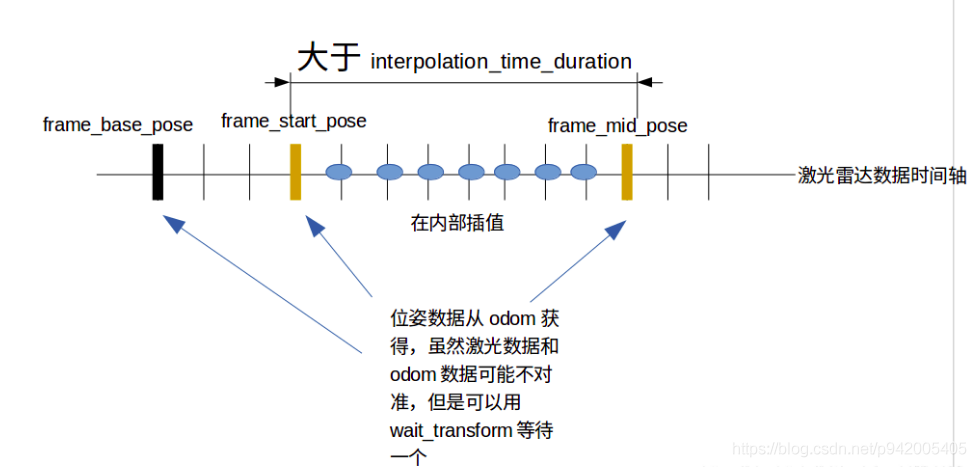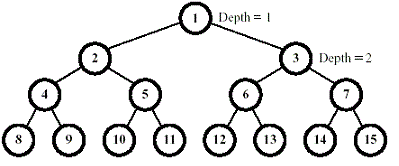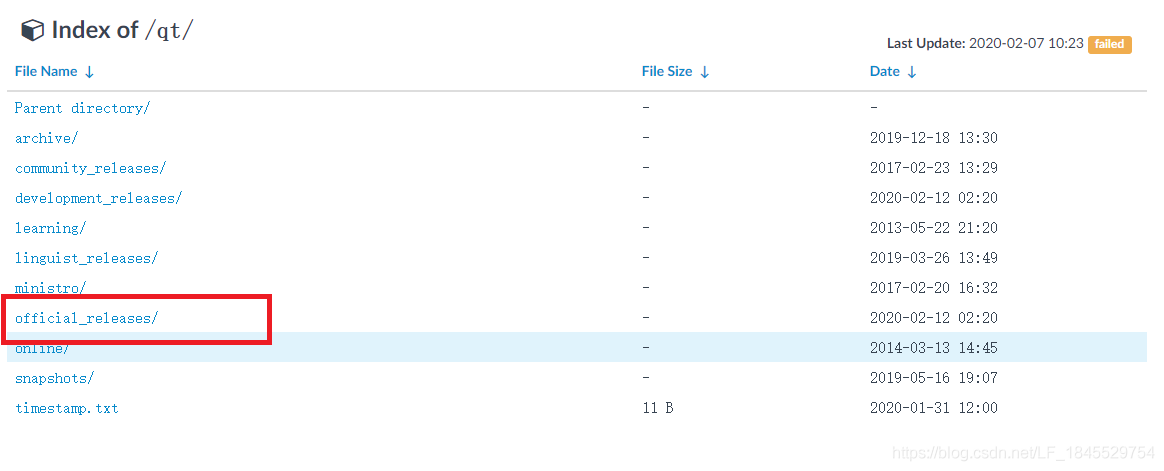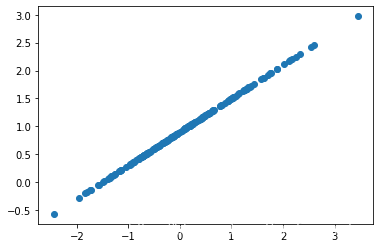当前位置:网站首页>赛氪-zeal
赛氪-zeal
2022-04-23 05:51:00 【Round moon】
zeal
题目描述
Yassin 最近在量化投资方面很有兴趣。
为了研究哪只股票是真正的牛股,他把历史 nn 天每一天成交量最大的股票代码写成了一排,并构建了一套属于自己的“理论体系”。
成交量多说明人气好,人气好的肯定买的人多,赚钱就要靠人气! – Yassin
但是知道的人太多,这个大家都去接盘,那就都成为韭菜了 – Makik
基于这个理论,Yassin 想知道 [L, R] 区间中人气“比较”好的股票有哪些,具体而言,他会给定你 L, R, k,你则需要告诉他 [L, R] 中出现 k 次的股票有多少只。
例如 n = 5 时,假设这个代码序列为 {1, 1, 2, 3, 1} 现在他给了一个询问 (2, 5, 1),你就需要回答他 {a2,a3,a4,a5} 中恰好出现 1 次的有多少种元素。答案显然为 2,恰好出现一次的元素为 2,3。
数据保证 0<ai,k<=n<=4×104,q<=104,L<=R。
输入
第一行 2 个数字 n, q, 分别表示序列的长度和询问的个数。
接下来一行 nn 个数字,为序列 an
接下来 qq 行,每行三个数字 L, R, k, 如题目描述所述。
输出
共 q 行,每行一个数字,为对应询问的答案。
Sample Input
5 1
1 1 2 3 1
2 5 1
Sample Output
2
思路解析
这是一个基础的莫队模板题,如果没有头绪,可以看下面的GIF图你就能明确了。
以
10 10
5 9 4 9 10 6 1 4 6 8
3 7 1
6 8 1
1 8 1
5 10 1
1 5 1
3 7 1
2 5 1
8 10 1
1 10 1
9 10 1
因为我们是从0开始计算的,所以我们每个位置都要减一。
这个数据为例,我们来探究。
莫队第一步,分块。至于为什么分块,请看其余的博客,了解莫队算法,这里我们默认知道第一步就是要分块,做离线处理。
首先先对数据进行分块。

接下来对我们的数据进行排序,做分块离线处理。
//排序方法
bool cmp(node a, node b)
{
if (block[a.l] == block[b.l])
{
if (block[a.l] & 1) return a.r < b.r;
return a.r > b.r;
}
return block[a.l] < block[b.l];
}
我们直接看最后的结果
| 序号 | L | R |
|---|---|---|
| 1 | 0 | 4 |
| 2 | 1 | 4 |
| 3 | 2 | 6 |
| 4 | 2 | 6 |
| 5 | 0 | 7 |
| 6 | 0 | 9 |
| 7 | 4 | 9 |
| 8 | 5 | 7 |
| 9 | 7 | 9 |
| 10 | 8 | 9 |
我们可以发现1-6为第0块,我们的排序方法是按照R的值升序排序,7-8是第一块我们降序排序,9-10为第三块,升序排序。排序过程就不过多赘述,下面我们就开始我们核心算法。两个指针的移动。

莫队的核心思想有点像dp,比如
你要算100的阶乘,如果告诉你99的阶乘那么你直接乘以100就可以,如果告诉你99的阶乘,要算98的阶乘,那么除99就可以了。
我们这里就有一个答案区间,每当指针移动的时候我们就更新这个区间,去掉的元素删除,新增的元素添加。
这里妙就妙在分块,成功的优化了暴力的复杂度,也就是说我们把这个数据变得理想化,让我们去执行起来很方便。
这里说一下,排序的时候让每一块的升降序规则不一样,这样能够保证我们可以走到最远处之后还可以沿着原路走回最近处,再沿着最近处走到最远处。
Accepted Code
//#include<unordered_map>
#include<algorithm>
#include<iostream>
#include<string.h>
#include <iomanip>
#include<stdio.h>
#include<vector>
#include<string>
#include<math.h>
#include<cmath>
#include<queue>
#include<stack>
#include<deque>
#include<map>
#include<set>
using namespace std;
typedef long long ll;
typedef unsigned long long ull;
const ll ll_inf = 9223372036854775807;
const int int_inf = 2147483647;
const short short_inf = 32767;
const ll less_inf = 0x3f3f3f3f;
const char char_inf = 127;
#pragma GCC optimize(2)
#define accelerate cin.tie(NULL);cout.tie(NULL);ios::sync_with_stdio(false);
#define PI 3.141592653589793
#define EPS 1.0e-8
ll gcd(ll a, ll b) {
return b ? gcd(b, a % b) : a;
}
ll lcm(ll a, ll b) {
return a / gcd(a, b) * b;
}
inline ll read() {
ll c = getchar(), Nig = 1, x = 0;
while (!isdigit(c) && c != '-')c = getchar();
if (c == '-')Nig = -1, c = getchar();
while (isdigit(c))x = ((x << 1) + (x << 3)) + (c ^ '0'), c = getchar();
return Nig * x;
}
inline void out(ll a) {
if (a < 0)putchar('-'), a = -a;
if (a > 9)out(a / 10);
putchar(a % 10 + '0');
}
ll qpow(ll x, ll n, ll mod) {
ll res = 1;
while (n > 0) {
if (n & 1)res = (res * x) % mod;
x = (x * x) % mod;
n >>= 1;
}
return res;
}
#define read read()
const int N = 4 * 1e4;
int block[N + 7];
struct node
{
int l, r, ask, id, ans;
}query[N + 7];
int save[N + 7];
bool cmp(node a, node b)
{
if (block[a.l] == block[b.l])
{
if (block[a.l] & 1) return a.r > b.r;
return a.r < b.r;
}
return block[a.l] < block[b.l];
}
int res[N + 7];
int cnt[N + 7];
void del(int num)
{
res[cnt[num]]--;
cnt[num]--;
res[cnt[num]]++;
}
void add(int num)
{
res[cnt[num]]--;
cnt[num]++;
res[cnt[num]]++;
}
int main()
{
int n = read, m = read;
int base = sqrt(n);
for (int i = 0; i < n; i++)
block[i] = i / base;
for (int i = 0; i < n; i++)save[i] = read;
for (int i = 0; i < m; i++)
{
query[i].l = read - 1, query[i].r = read - 1, query[i].ask = read;
query[i].id = i;
}
sort(query, query + m, cmp);
int l = 0, r = 0;
cnt[save[0]]++;
res[1]++;
for (int i = 0; i < m; i++)
{
int nowl = query[i].l, nowr = query[i].r;
while (l < nowl)del(save[l++]);
while (l > nowl)add(save[--l]);
while (r < nowr)add(save[++r]);
while (r > nowr)del(save[r--]);
query[i].ans = res[query[i].ask];
}
sort(query, query + m, [](node a, node b) {
return a.id < b.id; });
for (int i = 0; i < m; i++)
cout << query[i].ans << endl;
return 0;
}
By-Round Moon
版权声明
本文为[Round moon]所创,转载请带上原文链接,感谢
https://blog.csdn.net/qq_35339563/article/details/120901666
边栏推荐
猜你喜欢

clion安装教程

深蓝学院激光slam 理论与实践 第三章激光雷达去畸变 作业习题

信息学一本通-小球

cuda工程更换环境(电脑)后遇到的一系列编译问题

MOS管特性和导通过程

File viewing commands and user management commands

Graduation project, curriculum link, student achievement evaluation system

QT add qserialport class to realize serial port operation

基于TensorFlow的线性回归实例

类和对象的初始化(构造函数与析构函数)
随机推荐
产生随机数
【UDS统一诊断服务】二、网络层协议(1)— 网络层概述与功能
grub boot. S code analysis
PM2 deploy nuxt project
PN结、二极管原理详解与应用
Shell脚本 单引号、双引号和反引号的区别
基于VGG对五种类别图片的迁移学习
如何读文献
cartographer_node 编译没问题,但是运行直接挂掉的bug
C语言的浪漫
WMI技术介绍和应用
类的继承与派生
【UDS统一诊断服务】三、应用层协议(2)
日志写法(带时间)
利用文件保存数据(c语言)
基于VGG卷积神经网络的图像识别代码实现
在MFC中使用printf
C#【文件操作篇】PDF文件和图片互相转换
客户端软件增量更新
ROS包nmea_navsat_driver读取GPS、北斗定位信息笔记